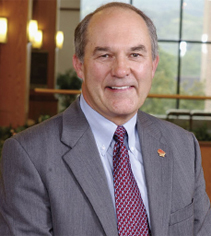
Last year, Department of Pediatrics Professor Philip Farrell, MD, PhD, became steering committee co-chair of the Lifecourse Initiative for Healthy Families (LIHF), a $10 million initiative to improve birth outcomes in Wisconsin.
Why? Because the infant mortality rate for African Americans in Wisconsin is the worst in the nation. Babies born to African American mothers were three to four times more likely to die in the first year than their white counterparts. It’s considered by many to be the most serious health problem facing the state.
Funded by the UW School of Medicine and Public Health’s Wisconsin Partnership Program, LIHF is a multiyear, evidence-based project designed to tackle this health disparity. And although the program has only been underway for about one year, it’s already nationally recognized.
The initiative incorporates public health and community-based interventions designed to meet the needs of African American women and their families. It focuses not just on taking care of women during pregnancy, but also before, between, and beyond pregnancy—literally the entire life course. The lifespan strategy for intervention has been endorsed by the Centers for Disease Control and Prevention.
Agencies in four Wisconsin cities—Beloit, Racine, Kenosha, and Milwaukee—received planning grants through the initiative, and are developing action plans that best suit their communities. These plans will identify high priority, evidenced-based programs that might be initiated or expanded with a second round of larger grants.
“In my judgment, the problem of African American infant mortality is Wisconsin’s greatest challenge,” Dr. Farrell commented, “but we should be optimistic about the prospects for successfully addressing this disparity during the next decade.”